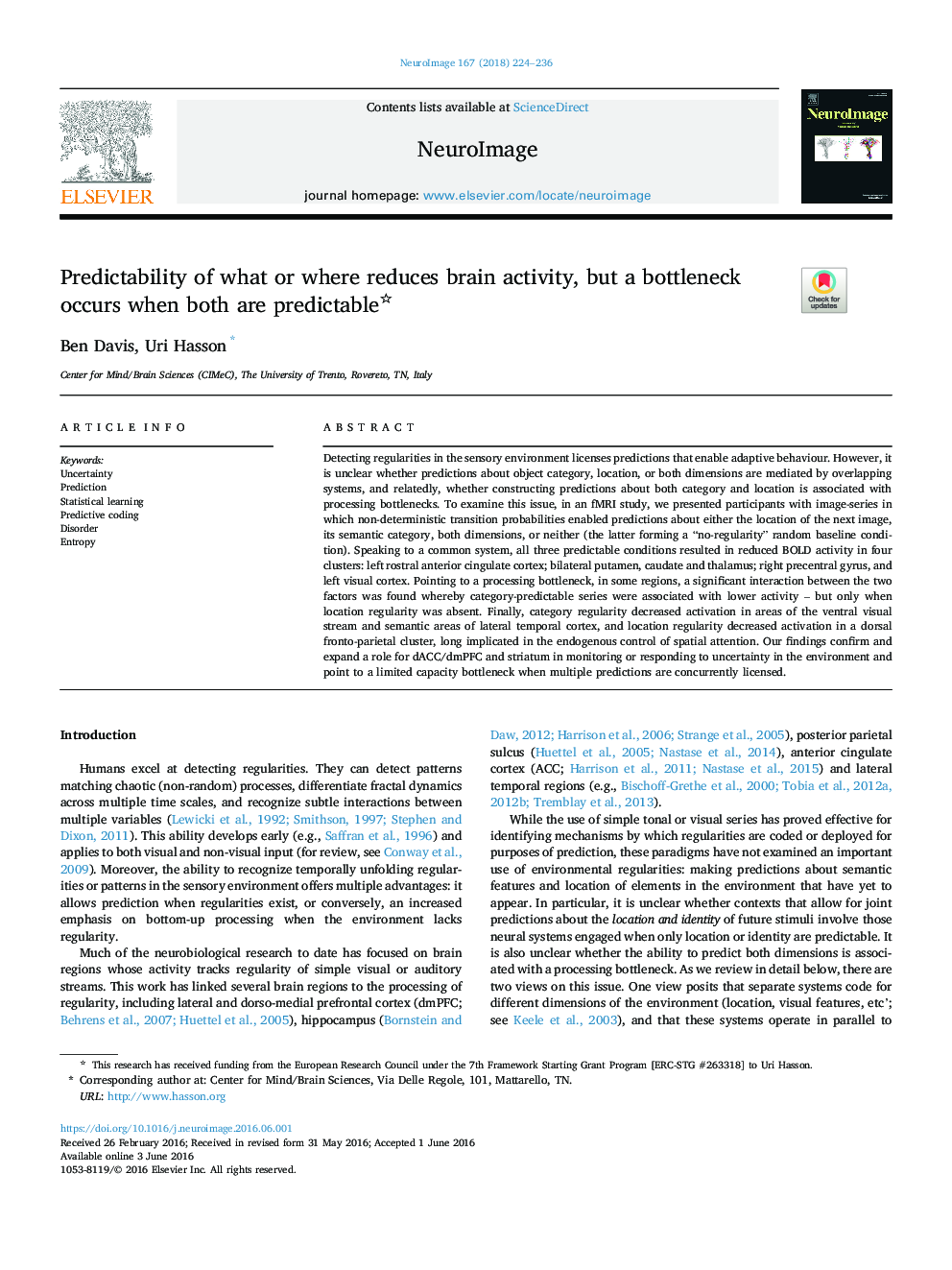| Article ID | Journal | Published Year | Pages | File Type |
|---|---|---|---|---|
| 8687290 | NeuroImage | 2018 | 13 Pages |
Abstract
Detecting regularities in the sensory environment licenses predictions that enable adaptive behaviour. However, it is unclear whether predictions about object category, location, or both dimensions are mediated by overlapping systems, and relatedly, whether constructing predictions about both category and location is associated with processing bottlenecks. To examine this issue, in an fMRI study, we presented participants with image-series in which non-deterministic transition probabilities enabled predictions about either the location of the next image, its semantic category, both dimensions, or neither (the latter forming a “no-regularity” random baseline condition). Speaking to a common system, all three predictable conditions resulted in reduced BOLD activity in four clusters: left rostral anterior cingulate cortex; bilateral putamen, caudate and thalamus; right precentral gyrus, and left visual cortex. Pointing to a processing bottleneck, in some regions, a significant interaction between the two factors was found whereby category-predictable series were associated with lower activity - but only when location regularity was absent. Finally, category regularity decreased activation in areas of the ventral visual stream and semantic areas of lateral temporal cortex, and location regularity decreased activation in a dorsal fronto-parietal cluster, long implicated in the endogenous control of spatial attention. Our findings confirm and expand a role for dACC/dmPFC and striatum in monitoring or responding to uncertainty in the environment and point to a limited capacity bottleneck when multiple predictions are concurrently licensed.
Related Topics
Life Sciences
Neuroscience
Cognitive Neuroscience
Authors
Ben Davis, Uri Hasson,
